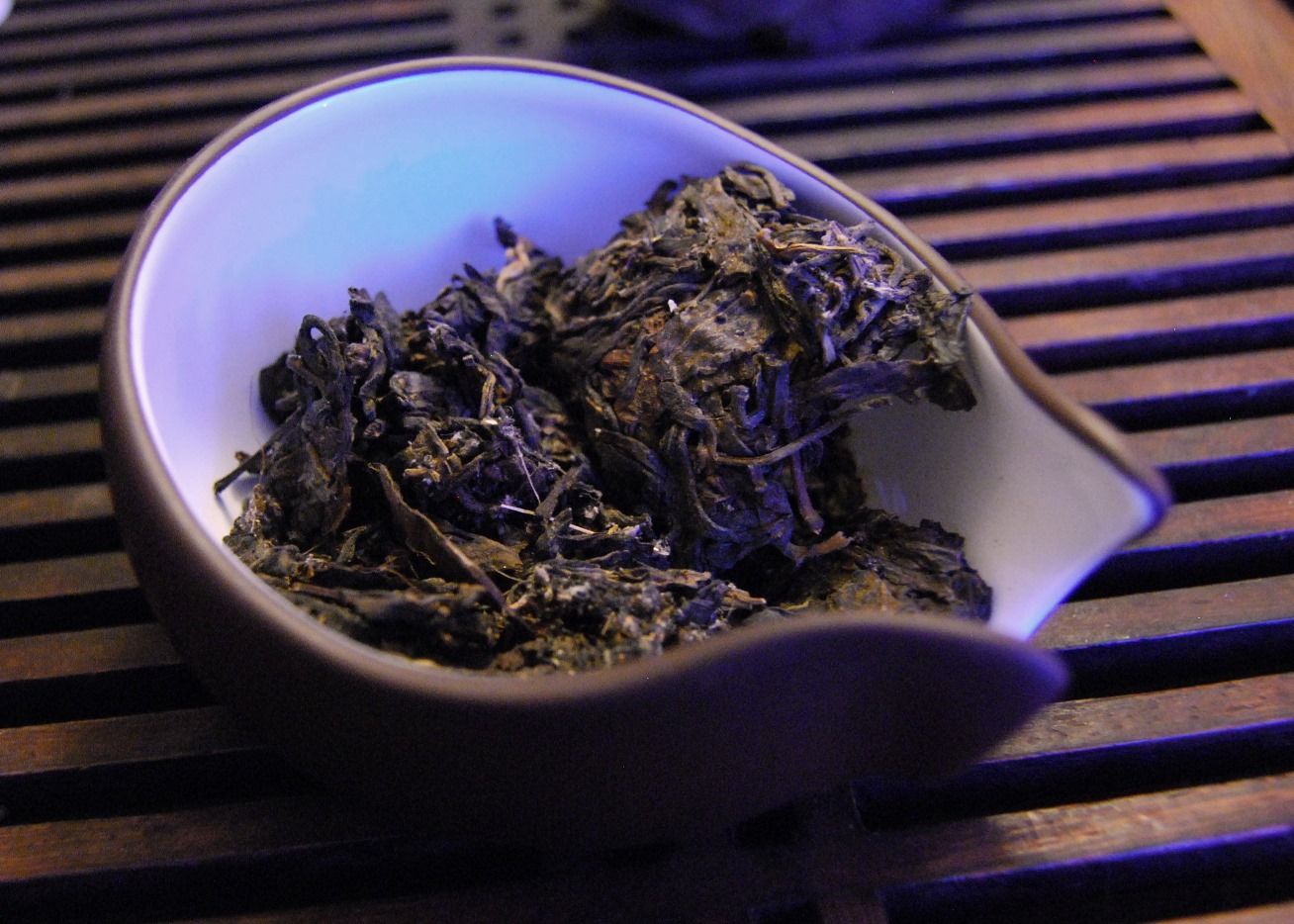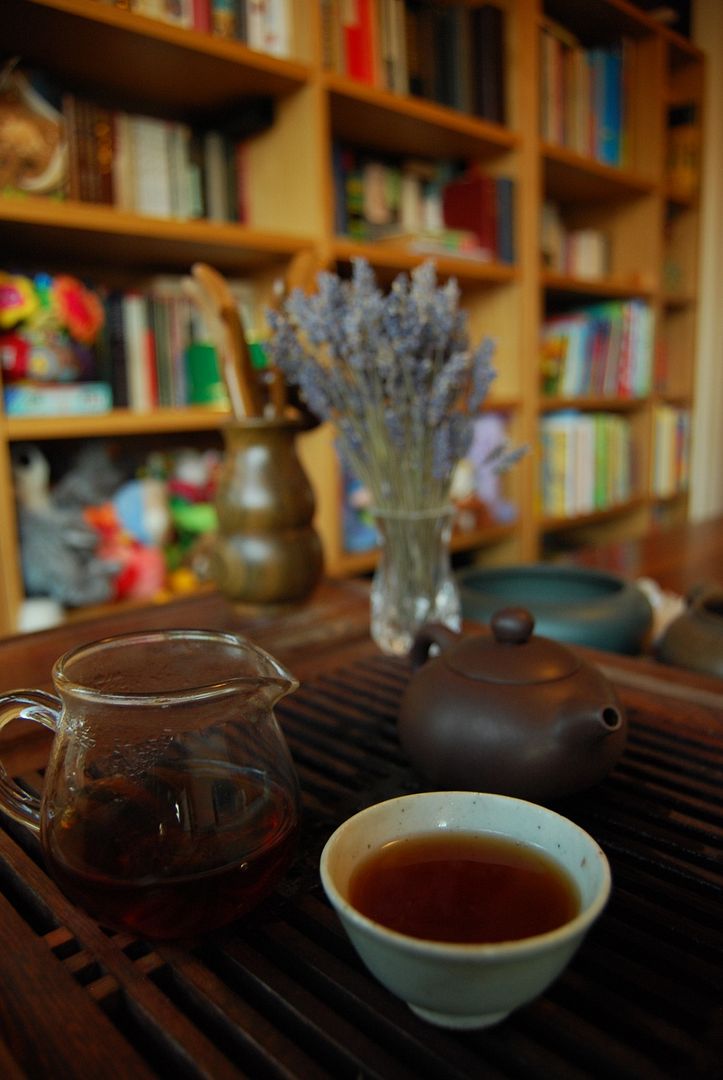Ave, Reader, full of tea,
blessed art thou among drinkers and blessed is the fruit of thy zishahu.
It has been one month to the very day, at the time of writing, that I have foisted my missives in your general direction, and I trust that this lunar cycle has been favourable to you and yours. I have come to conclude lately that my tiny little world is so very tiny, and my mind likewise, that I have very little idea about life beyond my immediate Schwarzschild radius.
This even goes for understanding that the weather is not the same the world over: as I sit here in Middle England, comfortably chilly, and wearing a cardigan, I am reminded of an academic visit to Paris last week. The entire city was so very, very hot that I had to [sharp inhalation of breath] remove my cardigan. Not even a waistcoat. There was not a single necktie in the entire city. And this was in May. Baffling. Happily, I was back in England within 24 hours for the purposes of seeing my little family, and so I was able to resume normality quite quickly. However, the experience was traumatic.
I suspect that the root cause of the problem here is that I have trouble understanding that some people are not me. That doesn't sit easily into my aforementioned tiny mind. So, when I kick back and write about hongcha, I naturally assume that you are totally into hongcha in the same way.
Imagine my surprise when I tried some of these teas out on friends and colleagues only to discover that some of them did not like the tea. Again, completely baffling. This is hongcha, and it's good hongcha - what more is there to say?
You might have guessed from the (pagan druidic?) wrapper that this little cake is from Ee-Oh-Tee. Check out those leaves, with the rusty tips. There's your hongcha right there.
It seems to be made from Mengsongshan leaves, and Ee-Oh-Tee notes that it comes from the same leaves as the 2014 "Yuanwei". Commercial confidence surrounds the exact location of the village, so that comparison might not be entirely helpful, but you get the general idea. It's pu'ercha gone red.
I admire a tea-maker with both the Jones and co-Jones to use good pu'ercha leaves for the purposes of making either (i) shupu, or (ii) hongcha. You are, essentially, guaranteeing yourself some chunky, meaty, beefiness. Never has beefiness been in such strong demand as when you sit down with a pot of the ol' hongcha, because you don't sit down with a pot of the ol' hongcha expecting a prissy, fussy, delicate experience. No, you expect to be slapped upside the head, and then insulted. You expect a bit of a fight. Hongcha is not supposed to go quietly into the night.
At a cost of 28 Britishunits for a mass of 200 S.I. grams, this is not too terrifying in its price. I think that's appropriate for something like hongcha. Isn't it interesting that if you just leave the tea as it is, and make a shengpu cake, then the result sells for £54/200g, but if you turn those same leaves into hongcha, then the price approximately halves? Mystifying. Cue enraged letters in the "comments" section.
This cake is as precise and clean as one would expect from Ee-oh-tee, and I like the fact that it has been tested for pesticides in a credible manner. I like even more the results of that test, which suggest that it is clean. This fact alone rather recommends it to my shelves, for some daily drinkage in the lab.
Like the puer'cha that it once was, this little hongcha lasts forever. Importantly, its carnivore-pleasing strength seems undiminished when brewed with lesser water-quality, during the working day.
Some months after drinking the above, I bounced into BIG TREE RED, which sounds like a Menghai special production but is, in fact, hongcha. I think that outcome pleased me.
As pictured above, this hongcha comes from Dubs. The web-site suggests that this is priced at $35 for "0.050 kg", and I wonder if there was a problem with the placement of the decimal point there. Thirty-five bux for 500g would be in line with my expectation for good ol' hongcha, while the same price for just 50g would be in danger of raising an eyebrow.
I suppose that it is at this stage I would be pointed in the direction of the text that describes how the leaves come from 100-200 year-old trees and that they have been massaged by the inner thighs of pretty, nubile teavixens.
Those teavixens really drive up the price.
I like Lincang. Lincang is rough, unapologetic, and great fun - and that's where these leaves originate. I can't say that I've ever had Lincang hongcha before, and so I'm attentive as the kettle kicks into gear.
To say that I brewed this tea hard is something of an understatement. I brewed this tea like nuclear fusion. I brewed this tea like Odysseus on an Ithacan goat after a decade at sea. Pile those leaves high, and pack that little pot to the brim. The result is solid, sharp, and potently cooling. It soon drops the pretence of being candy-sweet "hongcha" and gets down to the serious business of being red pu'ercha. It cuts through your life like a hot knife through churned lipid solution.
Drink this tea and conquer the world. Teavixens and all.
French Windmills
French windmills
always remind me of
English windmills





























